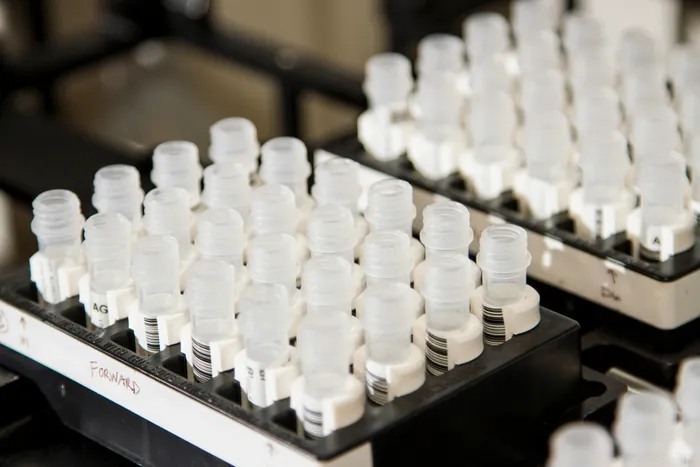KPV Peptide: A minimalist tripeptide with expansive potential

KPV, a tripeptide composed of lysine-proline-valine, is an endogenously occurring fragment derived from the C-terminal region of alpha-melanocyte-stimulating hormone (α-MSH). Despite its small size, KPV has emerged as a molecule of considerable interest in research due to its hypothesised anti-inflammatory, antimicrobial, and regenerative properties.
As a minimal bioactive sequence, KPV is theorised to retain many of the immunomodulatory characteristics of its parent peptide, α-MSH, while lacking its pigmentary and endocrine supports. This unique profile has positioned KPV as a promising candidate for exploration across various experimental domains, including dermatology, gastroenterology, ophthalmology, and tissue repair.
Structural simplicity and functional specificity
KPV’s structure—comprising only three amino acids—belies its functional complexity. As the terminal fragment of α-MSH, KPV is believed to retain the core sequence responsible for anti-inflammatory signaling. Unlike full-length α-MSH, which interacts with multiple melanocortin receptors (MC1R through MC5R), KPV is theorised to exert its support through both receptor-dependent and receptor-independent mechanisms. Some investigations suggest that KPV may act via MC1R, while others propose alternative pathways involving intracellular signaling cascades, such as NF-κB mitigation and cytokine modulation.
Anti-inflammatory properties and cytokine modulation research
One of the most widely explored domains for KPV is its hypothesised anti-inflammatory activity. Investigations suggest that KPV may suppress the production of pro-inflammatory cytokines, such as tumor necrosis factor-alpha (TNF-α), interleukin-6 (IL-6), and interleukin-1β (IL-1β), while enhancing the production of anti-inflammatory mediators, including interleukin-10 (IL-10). These actions are believed to be mediated through the mitigation of nuclear factor kappa B (NF-κB), a transcription factor central to the inflammatory response.
Possible implications in gastrointestinal inflammation
KPV has been extensively studied in the context of gastrointestinal inflammation, particularly in mammalian research models with observable cases of ulcerative colitis and Crohn’s disease. It has been hypothesised that the peptide may exert protective supports on the intestinal mucosa by reducing epithelial permeability, enhancing barrier integrity, and downregulating inflammatory signaling.
In murine models of colitis, KPV exposure has been associated with reduced myeloperoxidase activity, decreased neutrophil infiltration, and improved histological scores. These observations suggest that the peptide might support mucosal healing and modulate immune responses in the gut. Researchers have also proposed that KPV may be transported to inflamed intestinal tissues via the PepT1 transporter, a mechanism that might facilitate targeted exposure to sites of inflammation.
Dermatological research and wound studies
Another promising area of KPV research lies in dermatology and dermal cell regeneration. The peptide has been investigated for its potential to modulate inflammatory dermatological conditions, including atopic dermatitis, psoriasis, and contact dermatitis. It has been hypothesised that KPV may reduce keratinocyte-derived cytokine production and mitigate mast cell degranulation, thereby attenuating cutaneous inflammation.
In wound healing models, KPV has been associated with supported re-epithelialisation, increased collagen deposition, and improved angiogenesis. These supports are believed to be mediated through the activation and modulation of fibroblasts and matrix metalloproteinases (MMPs). Researchers are particularly interested in the peptide’s potential to accelerate healing in chronic wounds, burns, and surgical incisions.
Ocular surface and corneal research
The ocular surface represents another domain where KPV has suggested potential. Investigations suggest that the peptide may support corneal epithelial regeneration and reduce inflammation in mammalian research models exhibiting symptoms of dry eye disease, keratitis, and corneal abrasion. In experimental systems, KPV exposure has been associated with reduced ocular surface damage, decreased levels of inflammatory cytokines, and better-supported tear film stability.
Antimicrobial and barrier-protective properties
Beyond its anti-inflammatory activity, KPV has been hypothesised to possess antimicrobial properties. Investigations suggest that the peptide may mitigate the growth of both Gram-positive and Gram-negative bacteria, possibly by disrupting microbial membranes or interfering with quorum sensing. These properties have prompted interest in KPV as a potential adjunct in wound care, where infection control is critical to healing.
Implications in Respiratory and Pulmonary Research
KPV has also been explored in the context of respiratory inflammation. In models of allergic asthma and chronic obstructive pulmonary disease (COPD), the peptide has been associated with reduced eosinophilic infiltration, decreased mucus production, and improved airway resistance. These findings suggest that KPV may modulate Th2-mediated immune responses and suppress airway hyperresponsiveness.
Mechanistic insights and receptor interactions
While the precise mechanisms underlying KPV’s activity remain under investigation, several pathways have been proposed. The peptide is believed to interact with melanocortin receptors, particularly MC1R, although some of its actions appear to be independent of this receptor. For instance, KPV’s support on intestinal inflammation has been observed even in MC1R-deficient models, suggesting the existence of alternative signaling routes.
Future directions and research considerations
Despite its promising properties, many aspects of KPV’s biology remain to be elucidated. Future research may focus on identifying its specific receptor targets, mapping its downstream signaling networks, and optimising its stability and exposure in experimental systems.
Conclusion
KPV represents a minimalist yet potent peptide with broad implications for experimental biology. Its hypothesised potential to modulate inflammation, support epithelial regeneration, and support barrier function has positioned it as a valuable tool in research domains ranging from gastroenterology and dermatology to ophthalmology and immunology. As investigations continue to uncover the molecular intricacies of this tripeptide, KPV may offer new insights into the mechanisms that govern immune regulation, tissue integrity, and cellular resilience. Visit Core Peptides for the best research materials.